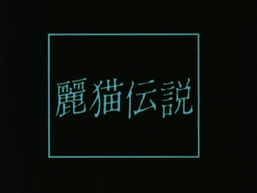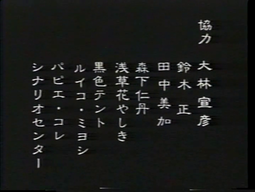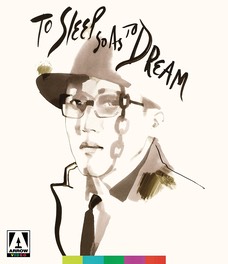
This last weekend, we held a workshop on the film director Obayashi Nobuhiko at Yale. This was part of a project Aiko Masubuchi, formerly of the Japan Society in New York, and I have been pursuing to publish the first book-length anthology on Obayashi in English. We had a public call for papers and invited those whose proposals were chosen to come to Yale to discuss their papers. It was in the format I like a lot: instead of people just reading their papers, the drafts were distributed beforehand and time was mostly used for discussion. Befitting a director who worked in so many media and genres, there were papers on many different topics by people of quite different backgrounds, with mine focusing on Obayashi’s work in television commercials. Contributors will now re-work their papers and turn in final drafts in the spring.
The workshop was closed to the public, but as its public facing aspect, we screened Obayashi’s TV movie Reibyo densetsu (麗猫伝説: which we provisionally translated as The Legend of the Beautiful Ghost Cat), which he made in 1983 for the Tuesday Suspense Theater slot. The film has come out on DVD in Japan, but it has likely never been shown abroad, so several of us split up the work and made some very rough English subtitles. Obayashi Chigumi, the director’s daughter, was a guest at the workshop, and she made a few comments after the film. It was interesting to hear that the house used in the film is actually the Obayashi family home in Onomichi.https://en.wikipedia.org/wiki/Takako_Irie
The film is an eclectic mix of Obayashi’s House, Wilder’s Sunset Boulevard, Mizoguchi’s Ugetsu, Japanese ghost cat movies, and Onomichi film nostalgia. It features Irie Takako (star of Mizoguchi’s The Water Magician, who also appears in Obayashi’s The Girl Who Leapt through Time) as an aged and reclusive movie star (Irie Takako) who suddenly reappears as a young siren who entices a movie producer (Godzilla’s Hirata Akihiro) to send a young screenwriter (Emoto Akira) to her island to write her comeback film. Things are not as they seem, as the film recalls the lineage of “bakeneko eiga” where cats turn into ghosts to revenge their owners or carry on their plans. Irie starred in a series of such films after the war, so Obayashi’s use of her is itself a cinematic citation. Crucial to the story is that he also casts Irie’s real life daughter Irie Wakaba, an Obayashi regular, making this—as with many other Obayashi films—a peculiar form of family movie. Here’s the teaser as broadcast at the time:

One thing that came to the fore in my mind was that the narrative of Reibyo densetsu strongly resembles that of Hayashi Kaizo’s To Sleep so as to Dream (Yume miru yo ni nemuretai), which was released three years later. Both feature a reclusive old actress who long ago ended their career with an incomplete film shot with a male actor who looks exactly like someone in the present, as well as a younger version of the actress who is active in the present and sparks a love relation with that present-day young man. I mentioned that similarity to Chigumi and she said Hayashi and his collaborator Agata Morio actually came to Obayashi’s office to ask permission to “borrow” elements of Reibyo densetsu (she even remembers the day, since it was her 20th birthday). Obayashi does get a “cooperation” credit in To Sleep so as to Dream, and interestingly, the actor Oizumi Akira appears in both films.
I was thinking about To Sleep So as to Dream since I wrote a commentary for the pamphlet that comes with the Arrow blu-ray release of the film that came out recently. This was the second commentary I wrote for Arrow after the release of Somai Shinji’s Sailor Suit and Machine Gun. Since I found out that Arrow unfortunately only includes the pamphlet in a certain number of the first discs sold, I’ll post my commentary on the film on the Yale repository eventually.

As for To Sleep So as to Dream, I basically argued the film is, on the one hand, actually quite accurate in both its cinematic emulation of Japanese silent cinema, and on the other, intentionally using anachronism to create a dream-like cinephilic space transcendent of history. As with the commentary on Somai, I made good use of the theater pamphlet for the movie. It’s a marvelous film, so do try to see it. You can get it at the Arrow US website here.

